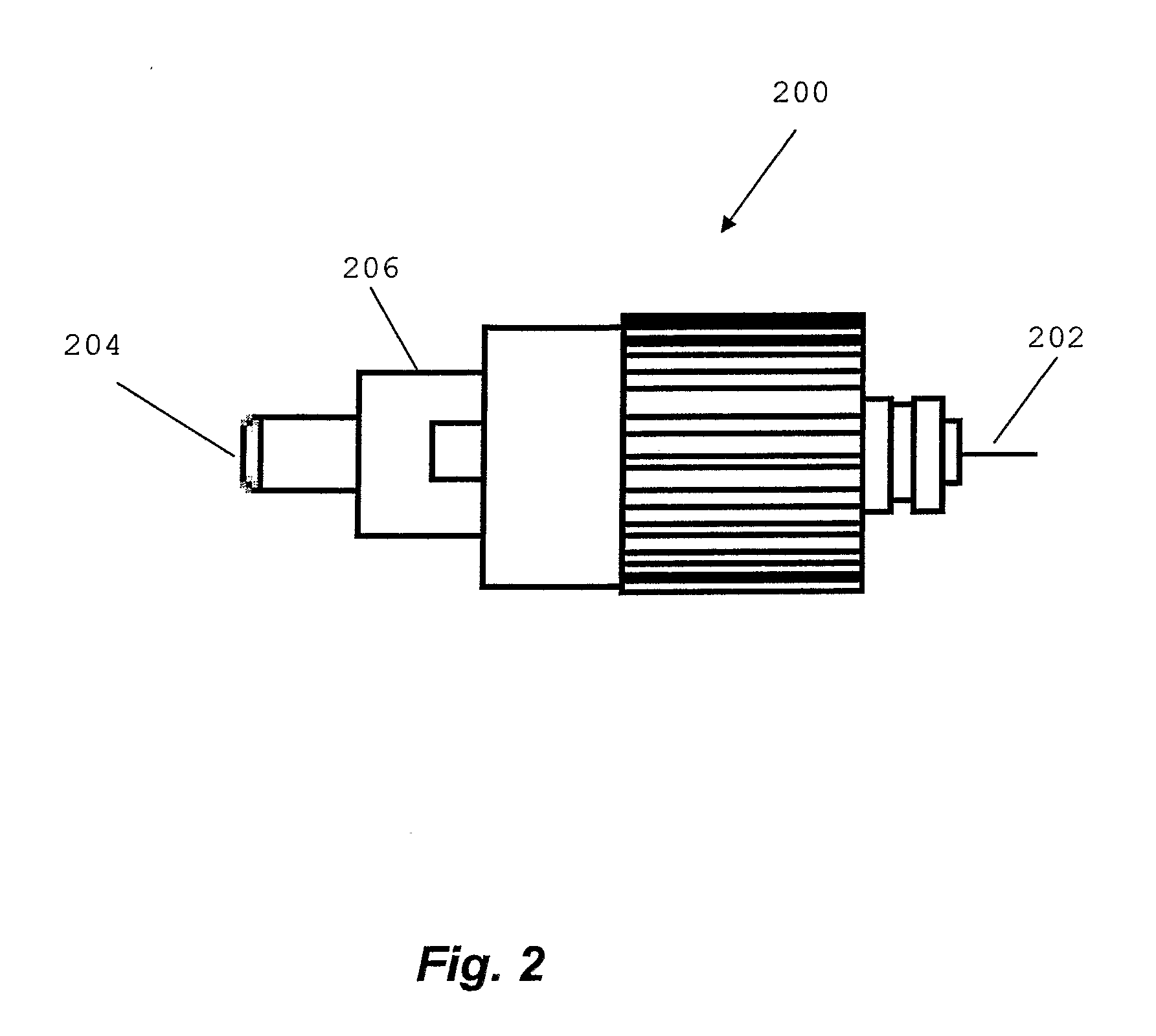Single photon emission system
a single photon and emission system technology, applied in the field of single photon emission system, can solve the problems of reducing limiting the security of conventional optical data transmission systems, and limiting the reliability of single photons, so as to reduce the loss of single photon intensity resulting from single photons emitted towards a side portion of optical fibres
- Summary
- Abstract
- Description
- Claims
- Application Information
AI Technical Summary
Benefits of technology
Problems solved by technology
Method used
Image
Examples
Embodiment Construction
[0038]Referring to FIGS. 1 to 3, a method of forming a single photon emission system and a single photon emission system according to specific embodiments of the present invention are now described.
[0039]FIG. 1 illustrates the method of forming a single photon emission system in accordance with a specific embodiment.
[0040]The method 100 comprises step 102 of identifying single photon emission properties of a particle located at a first location. The particle is arranged for single photon emission at a predetermined wavelength in response to a suitable excitation.
[0041]In this embodiment the particle is a diamond particle and identifying single photon emission also comprises depositing a plurality of the diamond particles on a substrate. The diamond particles may be provided in the form of a diamond powder. The particles of the diamond powder are suspended in a suitable solution, such as methanol, and applied to a substrate. The methanol is then evaporated resulting in the deposition...
PUM
 Login to View More
Login to View More Abstract
Description
Claims
Application Information
 Login to View More
Login to View More - R&D
- Intellectual Property
- Life Sciences
- Materials
- Tech Scout
- Unparalleled Data Quality
- Higher Quality Content
- 60% Fewer Hallucinations
Browse by: Latest US Patents, China's latest patents, Technical Efficacy Thesaurus, Application Domain, Technology Topic, Popular Technical Reports.
© 2025 PatSnap. All rights reserved.Legal|Privacy policy|Modern Slavery Act Transparency Statement|Sitemap|About US| Contact US: help@patsnap.com



